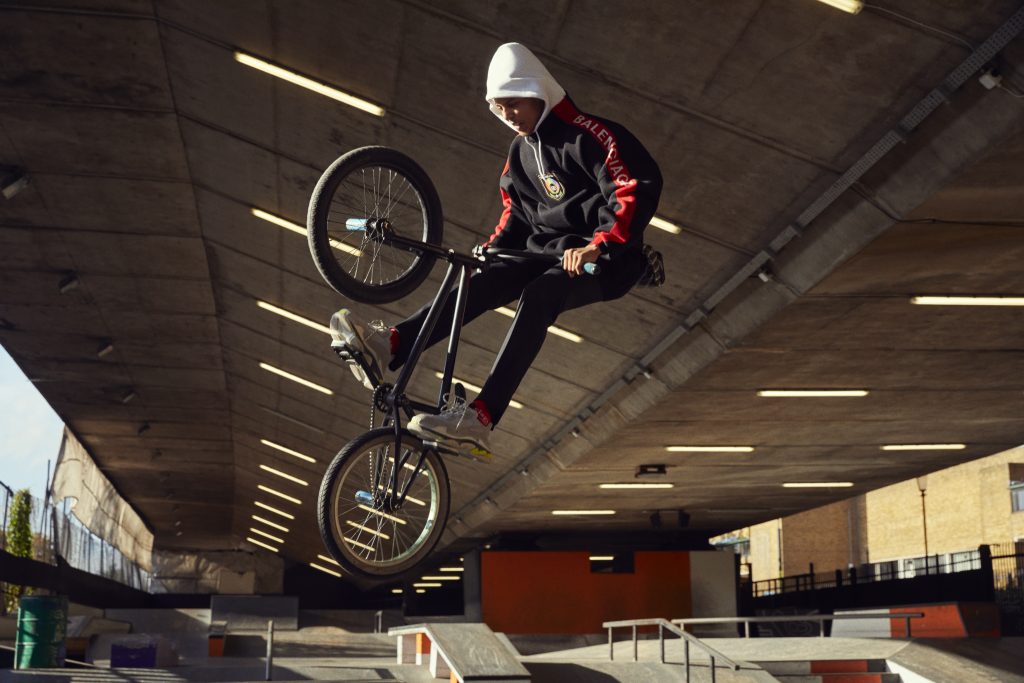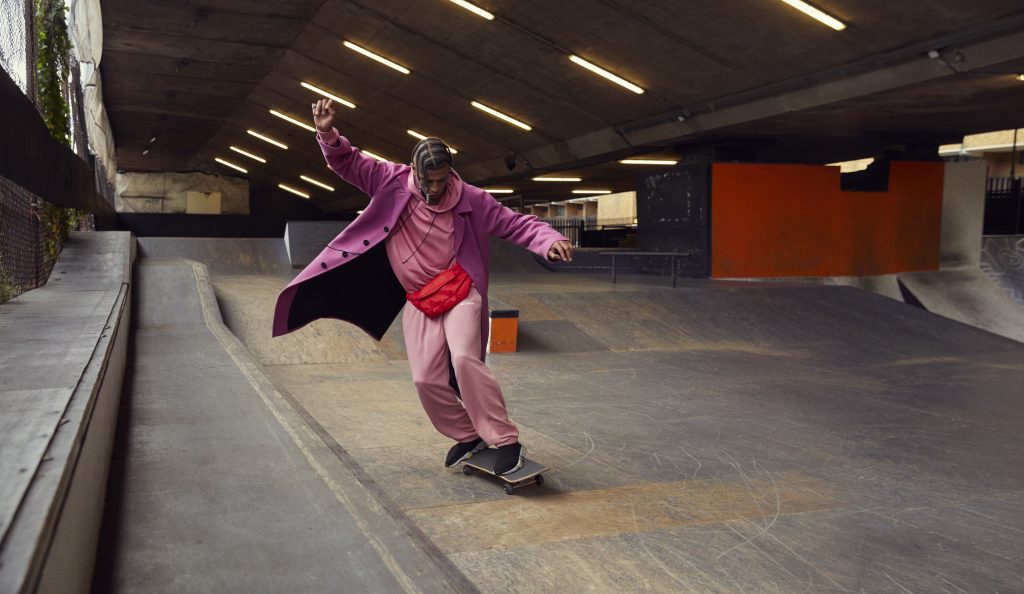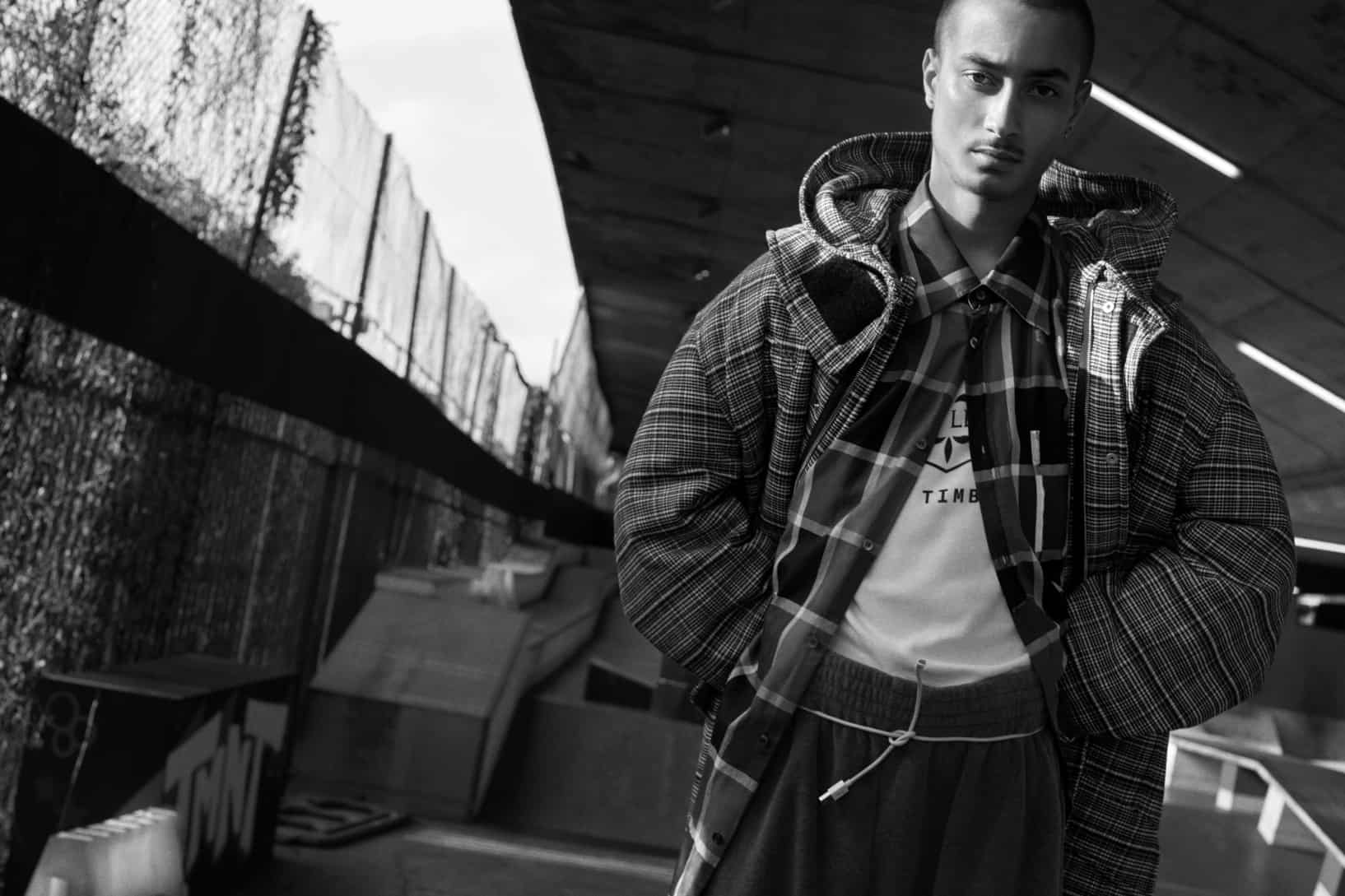FASHION EXPERTS AND RETAILERS ON WHY NOT TO IGNORE STREETWEAR

For the last several years, we can’t seem to escape the influence of streetwear. The category that traditional retailers love to hate is not going anywhere. In fact, the market segment’s influence shows no signs of slowing down.
Some may say its symbolic high point came back in 2017 when streetwear darling Supreme sold a stake that reportedly valued the company at $1 billion to the private-equity firm Carlyle Group. It was a staggering valuation for a company known for selling hoodies and t-shirts, and for drawing lines of devoted teenagers to their store for weekly drops.
But the success of Supreme, and streetwear in general, makes sense when you consider changes in fashion and culture. The rise of casual styles and stretch fabrics used across all classifications is a demand for comfort. This coupled with Millennials and Gen Z shoppers, which represent a dominant share of fashion consumers, is helping to propel streetwear to the inevitable climax we’re in now.

“It’s gone beyond a trend; the market has adapted to the reality of how men dress,” maintains Robert Nowill, global content and style editor at Farfetch. “Sneakers, sportswear, hoodies, bomber jackets: these aren’t trend items, they are mainstays in most men’s wardrobes. They’re not going anywhere. That said, over the last couple of seasons we’ve also seen designers off-setting these more casual pieces with elevated, sophisticated, tailored fashion.”
Bruce Pask, men’s fashion director for Bergdorf Goodman and Neiman Marcus, tends to agree with this notion. “Streetwear, or ‘athletic-inspired sportswear’ as I like to call it, is less of a trend and more of a wardrobe component. I think it’s great for the customer to have flexible boundaries for what defines a specific category. Kim Jones at Dior Men’s and Riccardo Tisci at Burberry are adding both tailoring and athletic influences for a more robust assortment. This mix of high and low, tailored and casual — it makes for a more compelling store and shopping experience.”
“Streetwear is here to stay,” adds Roopal Patel, fashion director at Saks Fifth Avenue. “This category has been part of the menswear wardrobe for decades and continues to grow and evolve. Hoodies, sweatpants, track suits, and sneakers have always existed, but now these items have been elevated and are part of the man’s everyday wardrobe.”

So, who is buying this “stuff” anyway? “Overall, it’s a young men’s game when it comes to luxury streetwear,” says Michael Fisher, vice president and creative director of menswear at trend forecasting agency Fashion Snoops. “Guys in their teens to early 30s are driving the trend. I think the interesting thing is how young guys are driving the re-introduction of street-centric collections from the 90s like Perry Ellis America, or unexpected collaborations like Palace Ralph Lauren (with Palace skateboards) and Tommy Hilfiger x Kith.”
Farfetch is seeing a larger customer base for the streetwear items it sells. “It’s not just Millennials, though they are a key demographic for these kinds of products,” adds Nowill. “More broadly, it’s men with a Millennial mindset, regardless of their age or where they live: they have an interest in design, they care about the way they look, and they don’t want to dress like their parents did.”
Patel shares this sentiment. “The beauty of streetwear is that it’s accessible for everyone,” she says. “From the 15-year-old high school student, to the 30-year-old entrepreneur, to the 45-year-old dad, streetwear doesn’t have an age limit.”

This brings us all back to Supreme – the true godfather of streetwear. This brand can be seen on high school students to 45-year-old dads as mentioned above. But what other brands are developing this new wave of athletic-inspired sportswear? “Virgil Abloh and Off White, in my opinion, have driven this category for quite some time, even more than Kanye West,” says Fisher. “These days, I continue to look to Kith for the most excitement in this category. Ronnie Fieg (owner and creator of Kith) continues to dazzle us each season with collaborations with partners like Greg Lauren, Tommy Hilfiger, and even Versace. Also, its brick-and-mortar retail experience can’t be beat. I would imagine, going forward, that even more of the classic 90s all-American brands will look for ways to build on the nostalgia of their glory days.”
For Farfetch, the brands that are dominating streetwear its business run the gamet. “We’ve seen success from revered labels like Balenciaga, Raf Simons and Undercover to emerging names like Ader Error, Vyner Articles and GmbH,” says Nowill. “The brands that have most captured the attention of our customers are the ones with a truly original point of view.”
Moving into fall 2019, stores looking to dabble in this hype-driven category can start by adding sneakers. Every buyer we spoke to about streetwear for this story mentioned how sneakers are driving this customer to come into the store and make a purchase – whether it’s on the newest “ugly dad sneaker” or for fresh interpretations of classic hi-tops. Other easy additions include graphic tees or oversized sweatshirts. But what’s most surprising, according to Fisher, is the resurgence of classic menswear shapes like the car coat reimagined in relaxed silhouettes with non-traditional fabrics and prints, adding newness to all levels of streetwear.
PHOTOGRAPHY BY TOM SLOAN AT LALALAND ARTISTS FOR FARFETCH








